 Image 1 of 28
Image 1 of 28

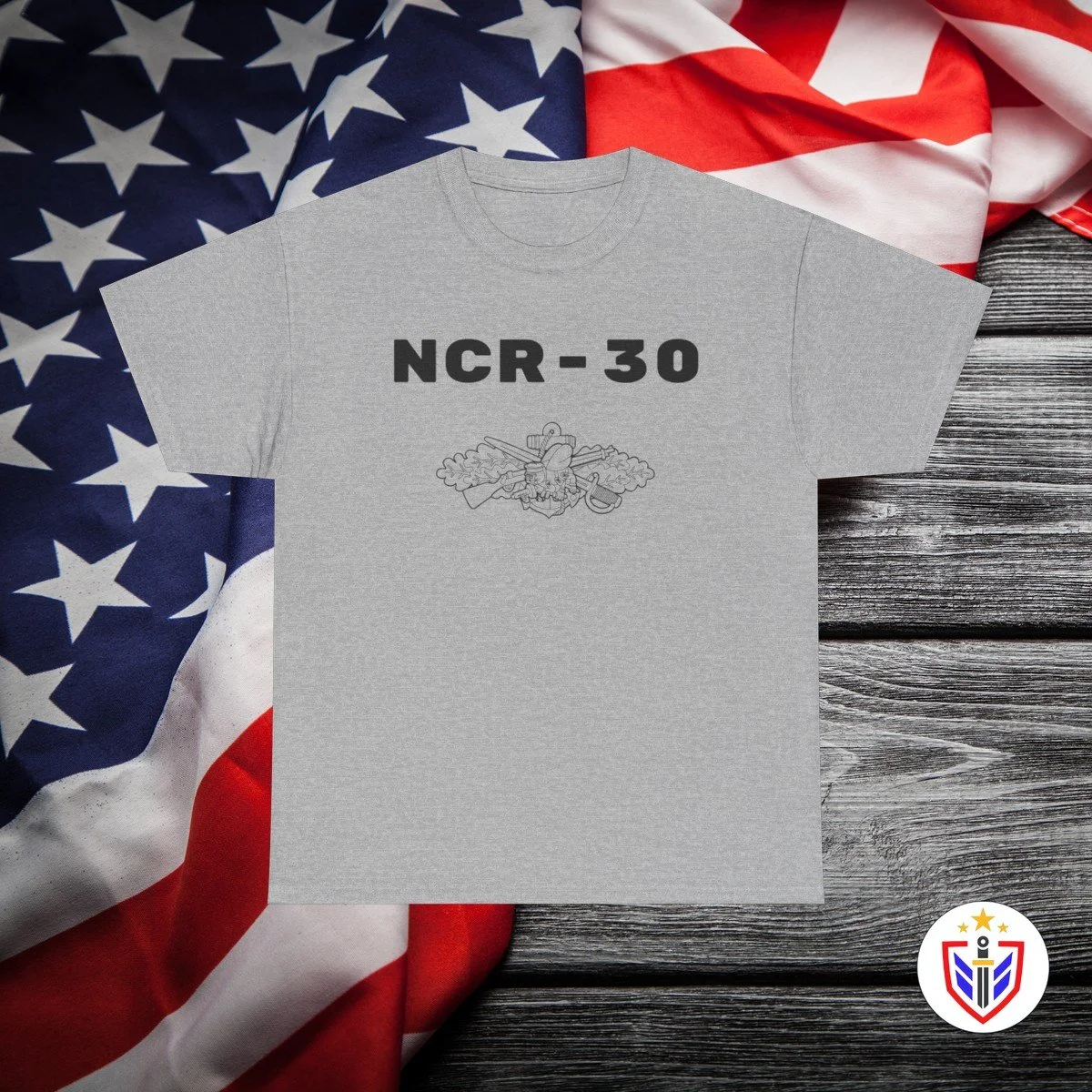 Image 2 of 28
Image 2 of 28

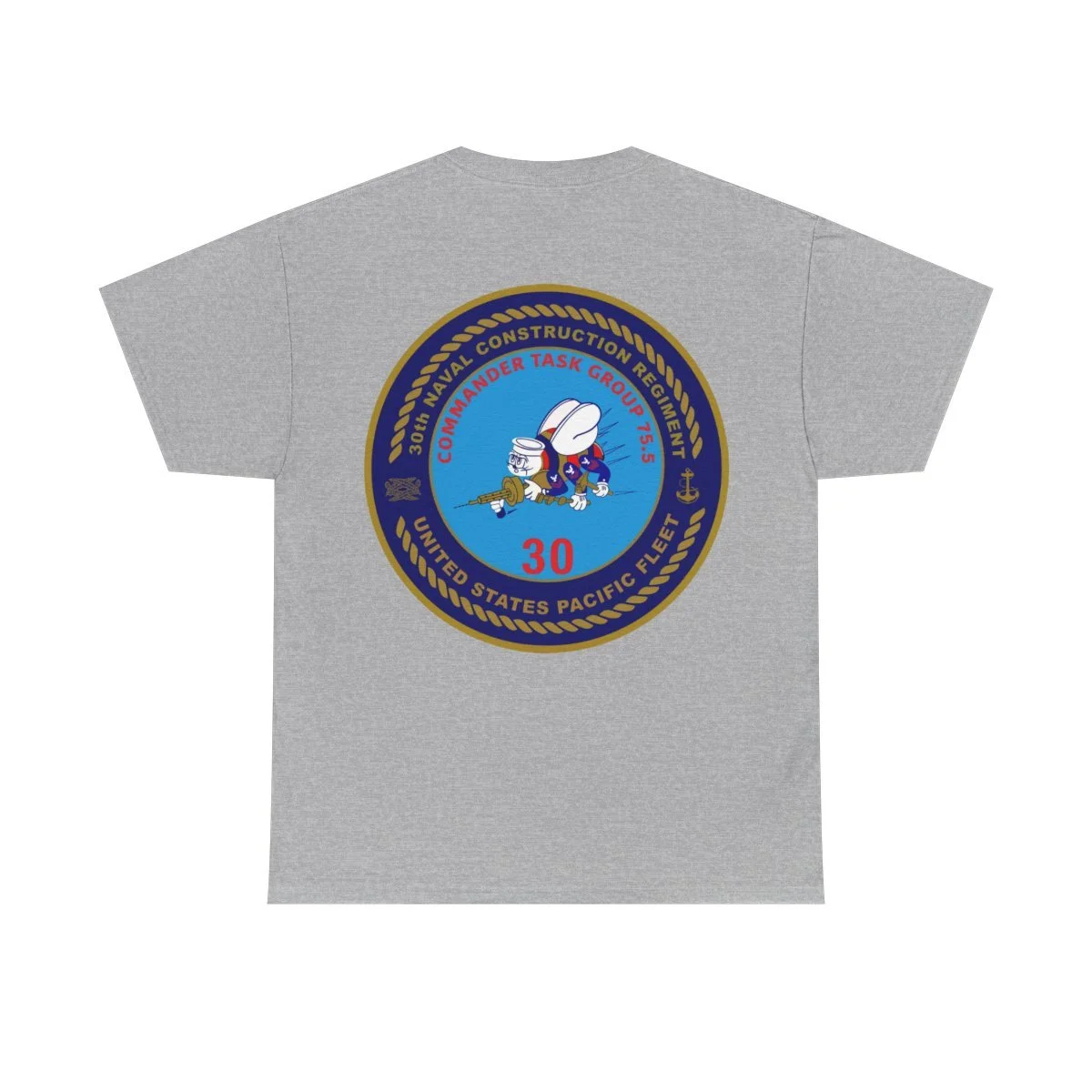 Image 3 of 28
Image 3 of 28

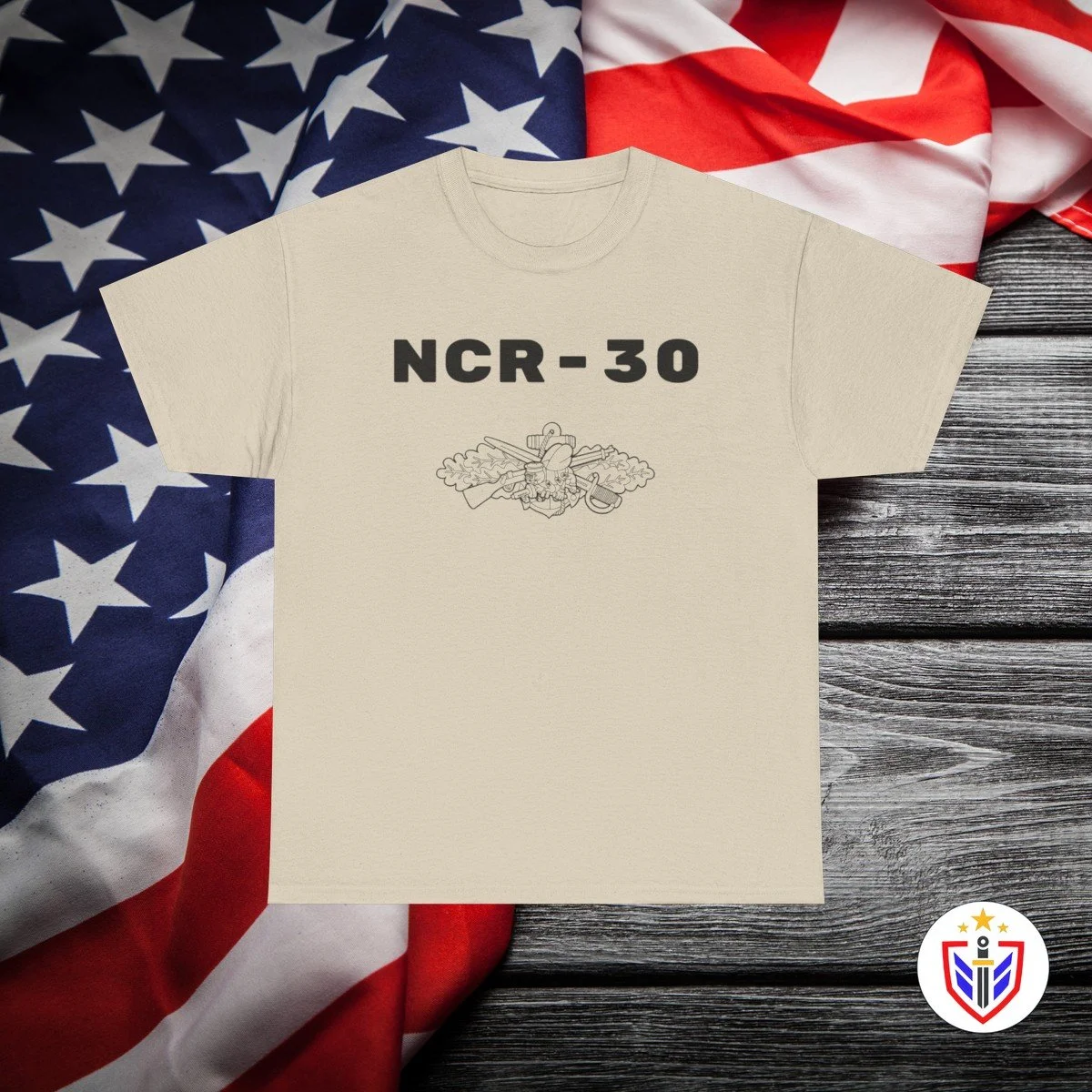 Image 4 of 28
Image 4 of 28

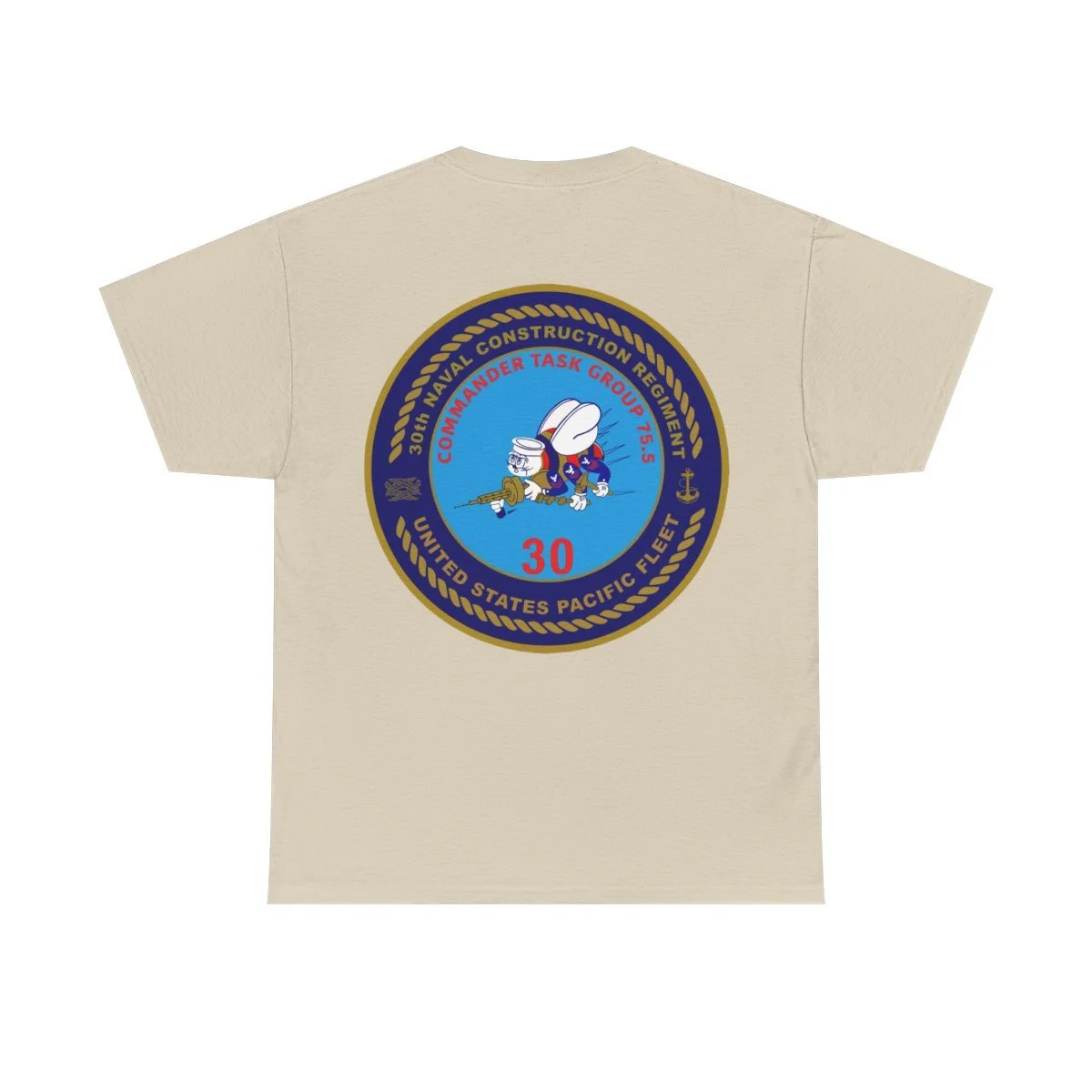 Image 5 of 28
Image 5 of 28

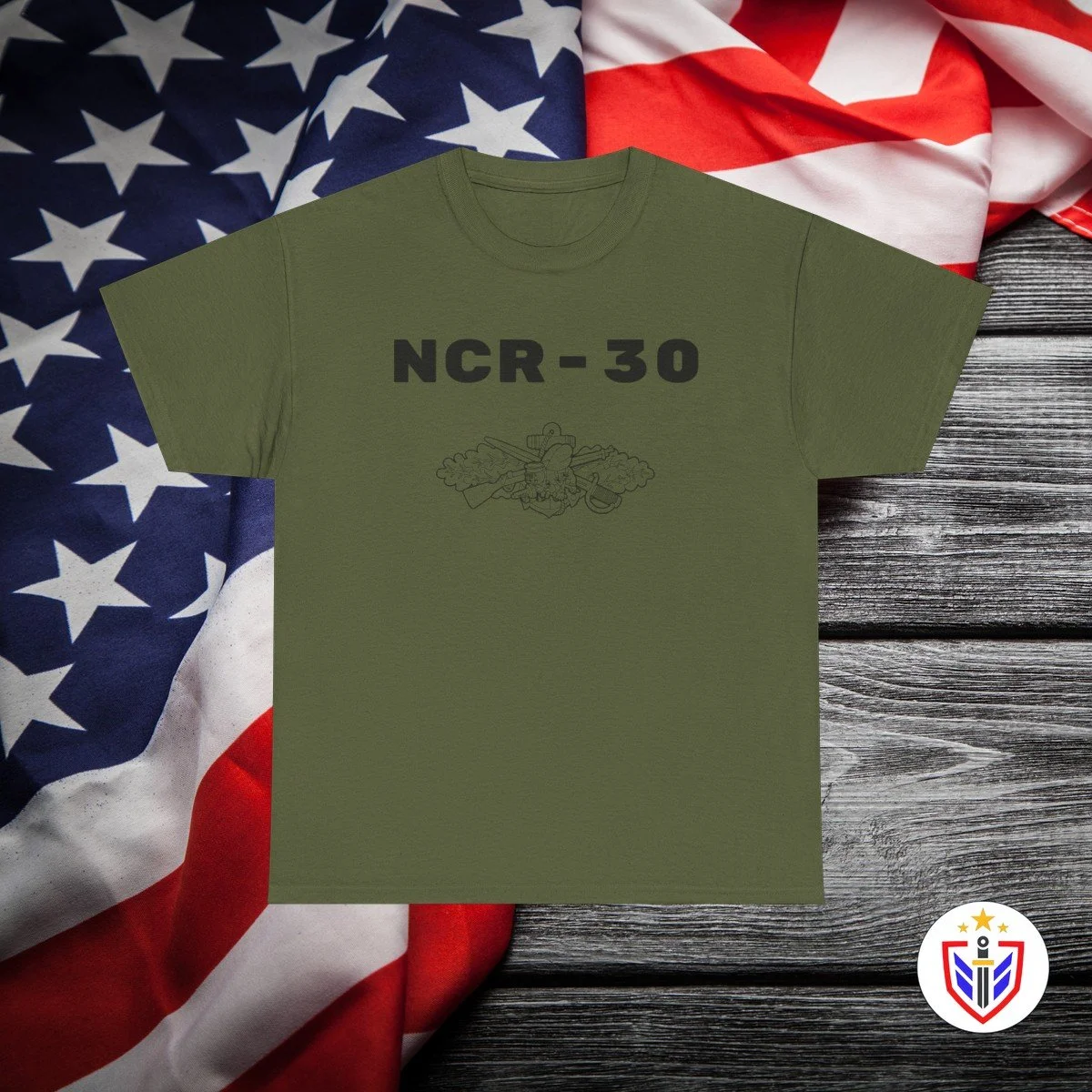 Image 6 of 28
Image 6 of 28

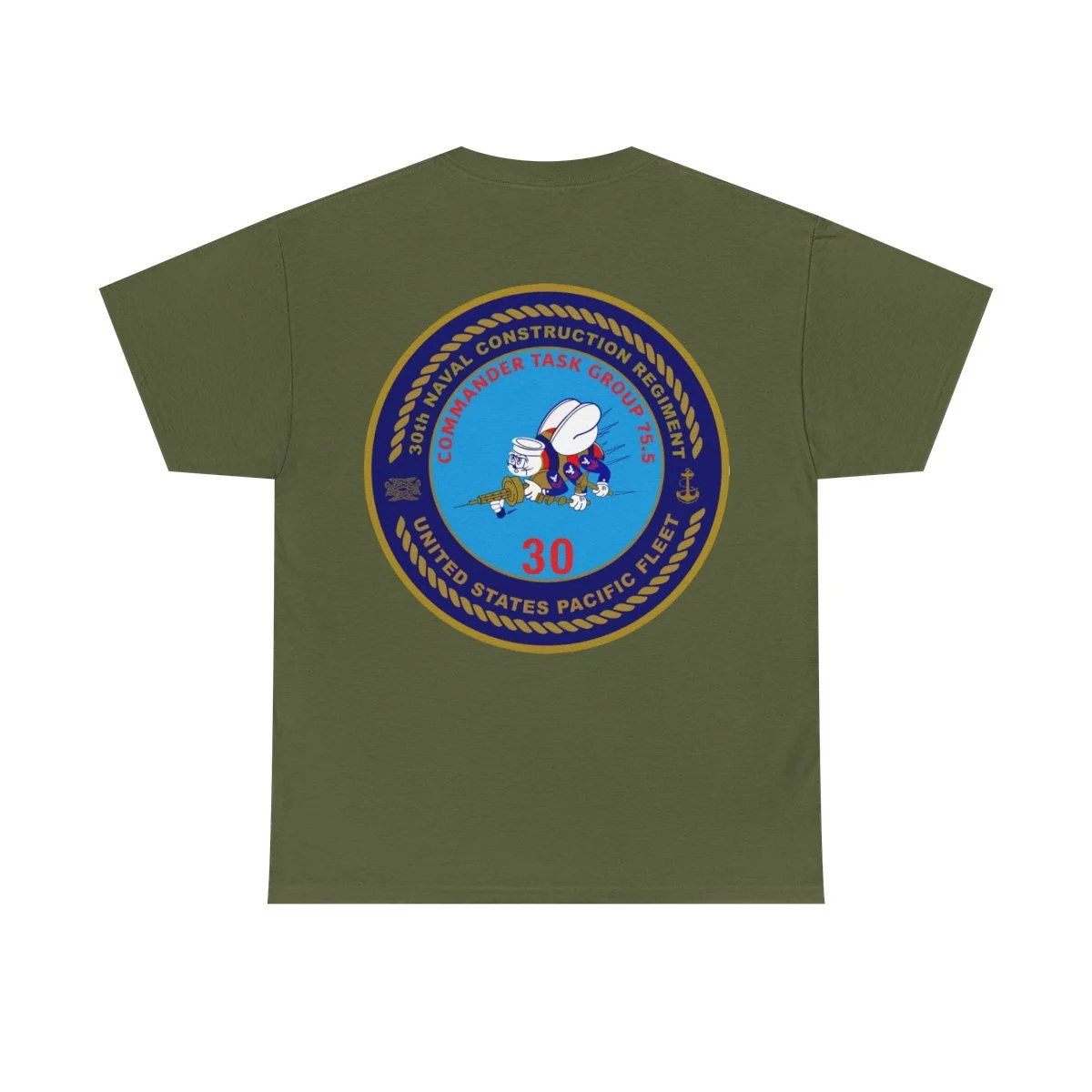 Image 7 of 28
Image 7 of 28

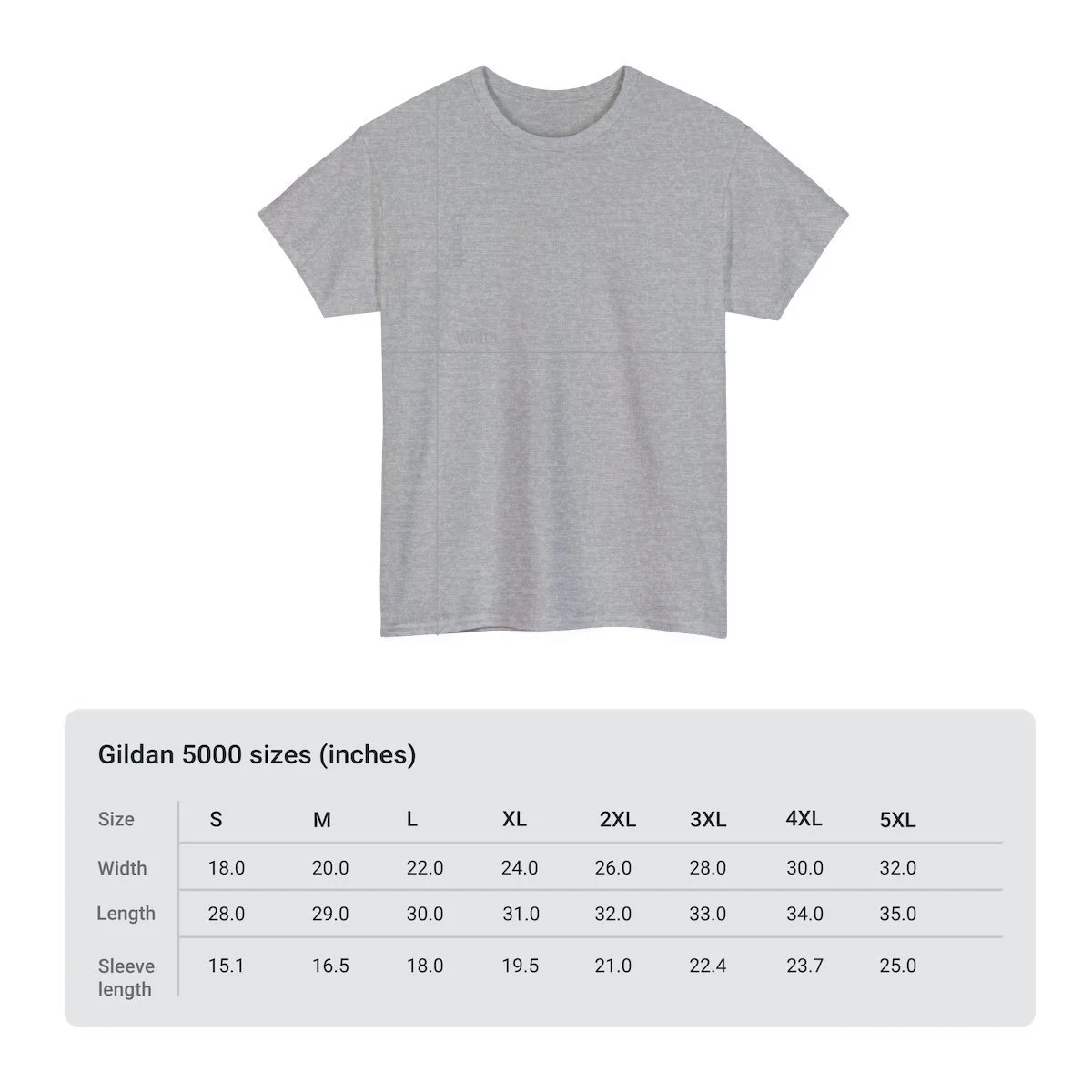 Image 8 of 28
Image 8 of 28

 Image 9 of 28
Image 9 of 28

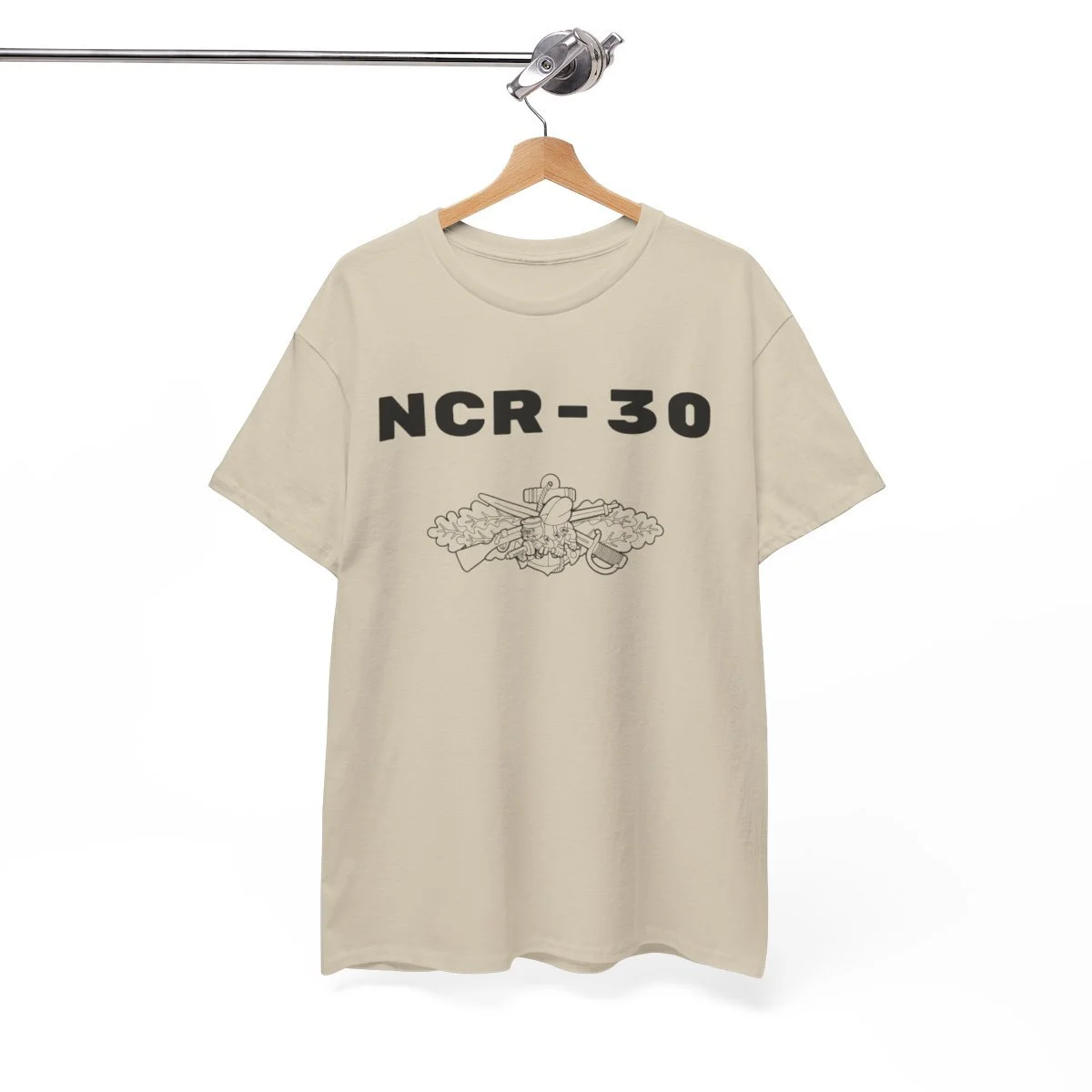 Image 10 of 28
Image 10 of 28

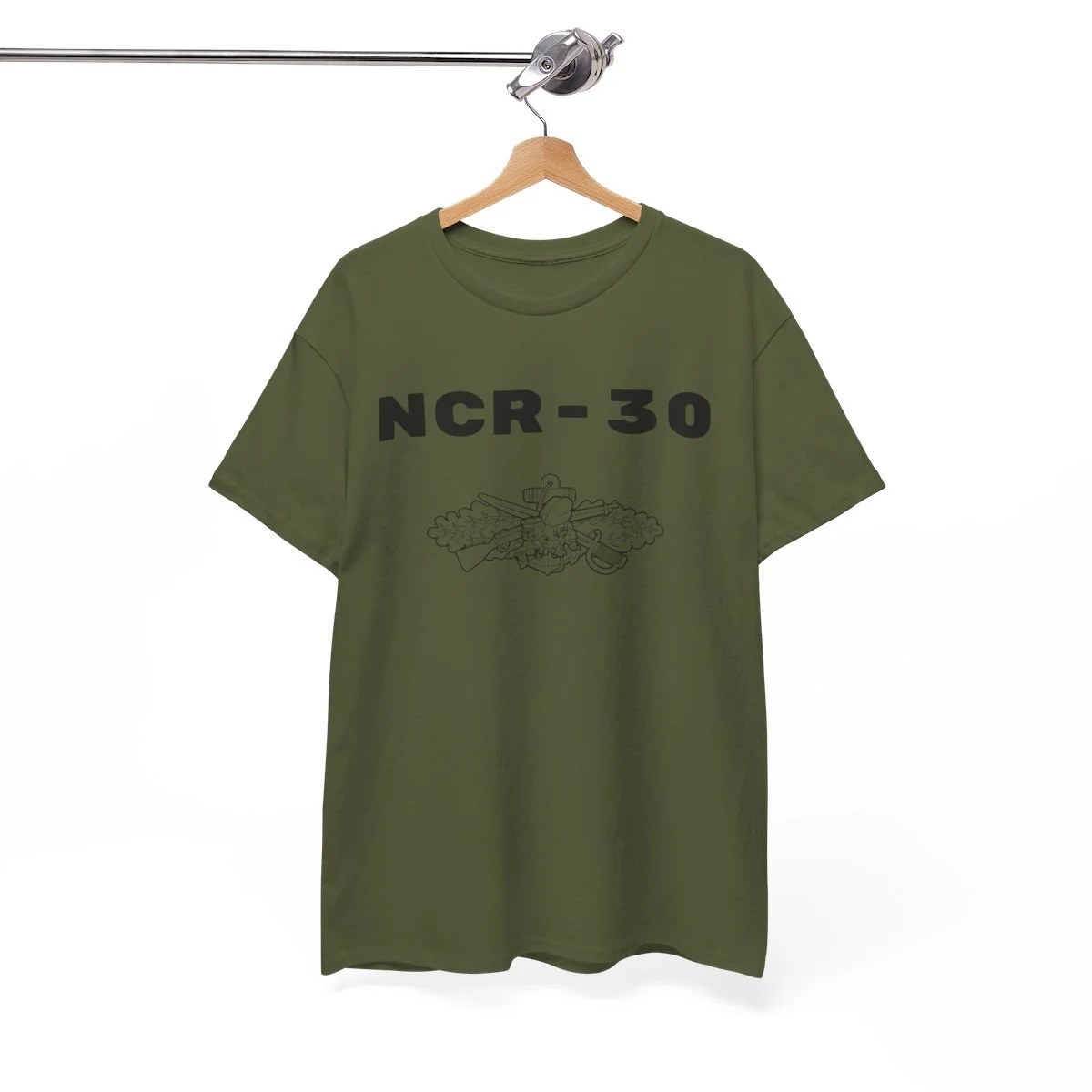 Image 11 of 28
Image 11 of 28

 Image 12 of 28
Image 12 of 28

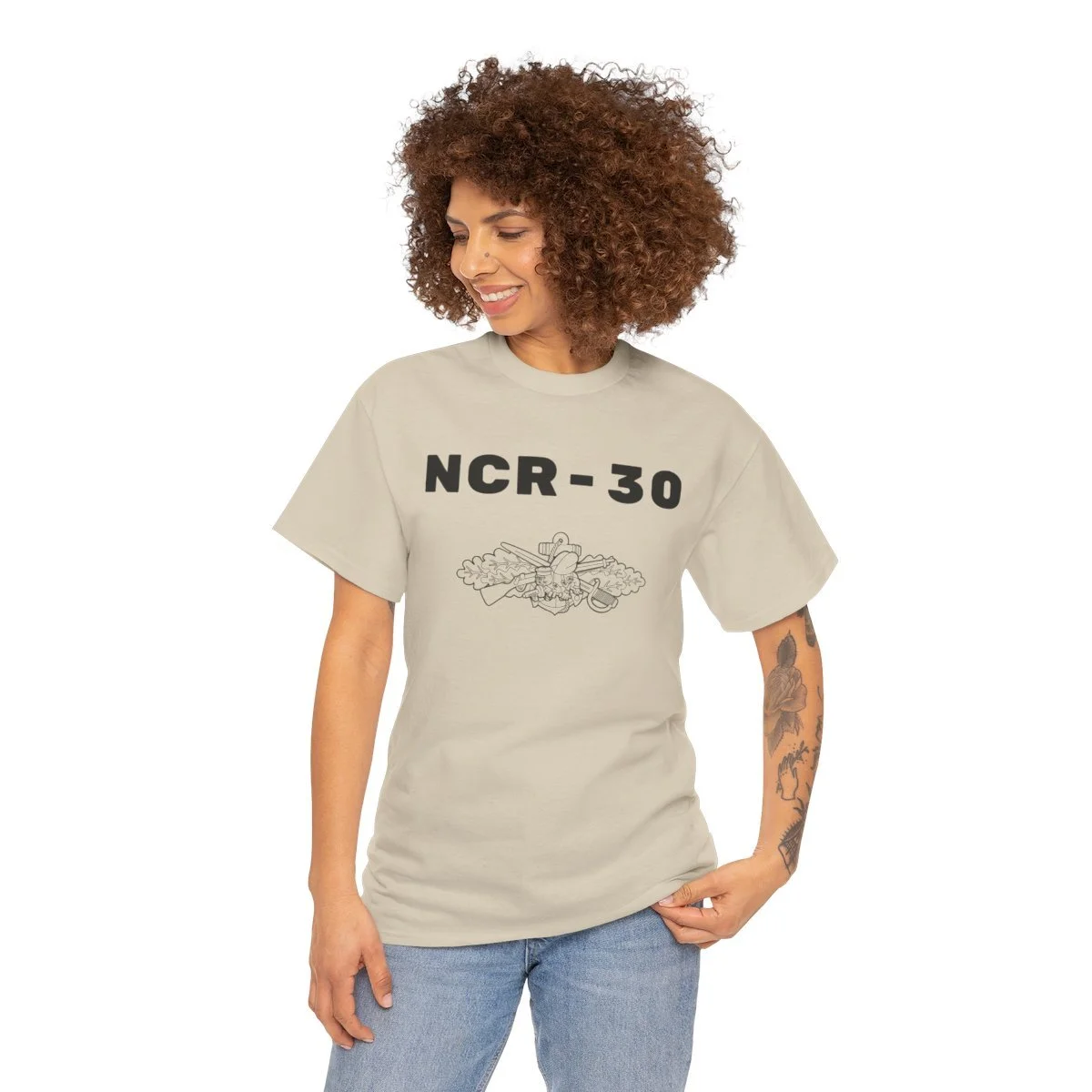 Image 13 of 28
Image 13 of 28

 Image 14 of 28
Image 14 of 28

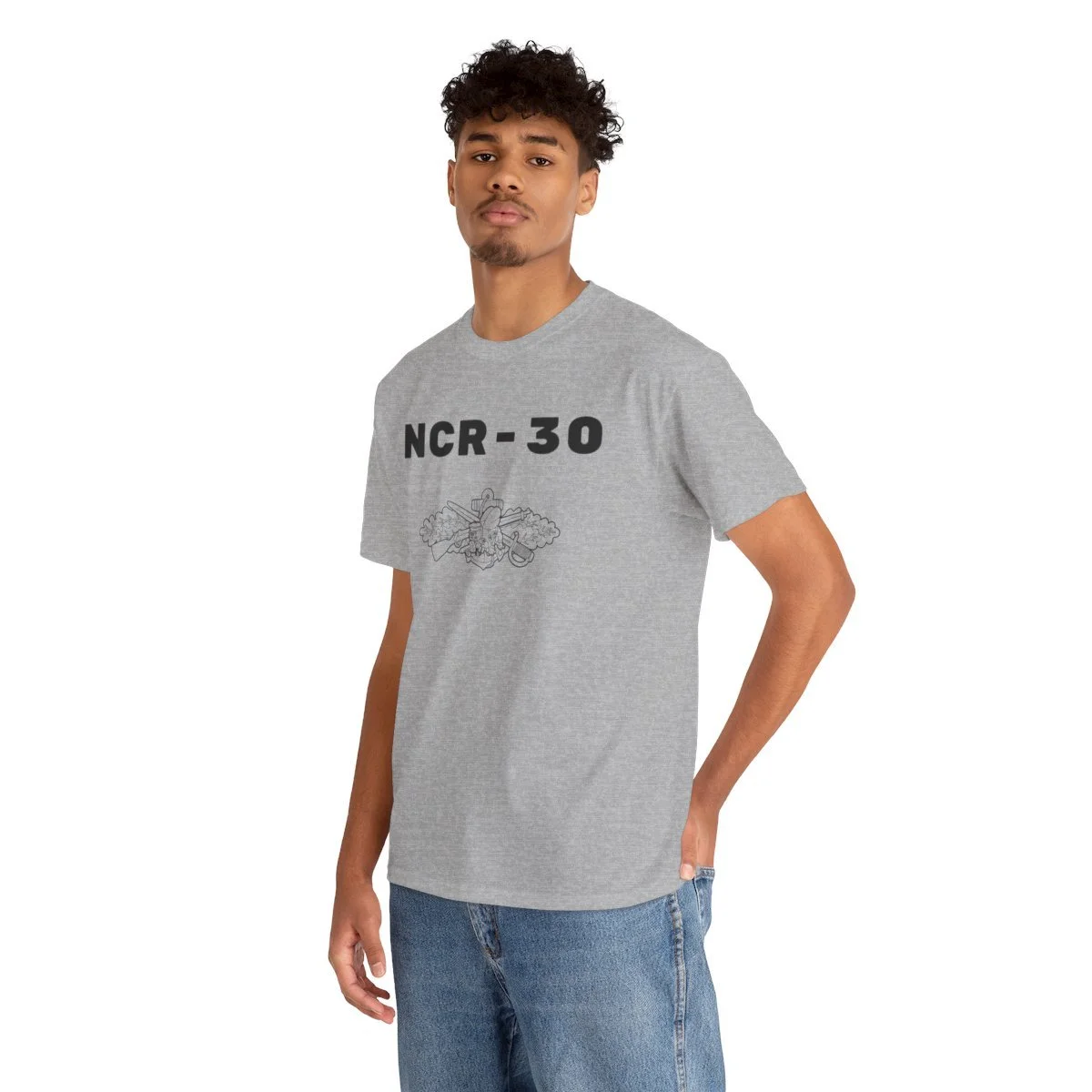 Image 15 of 28
Image 15 of 28

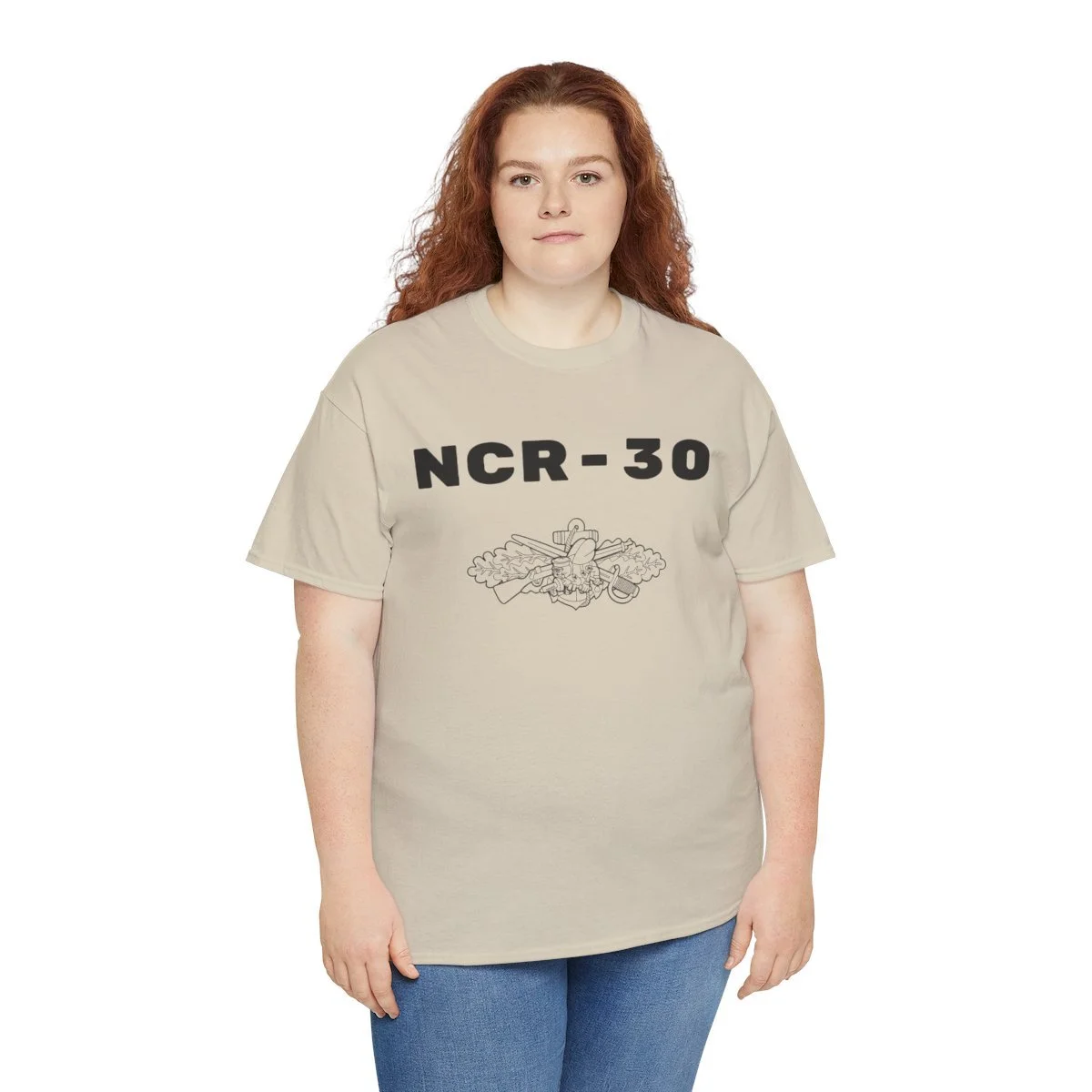 Image 16 of 28
Image 16 of 28

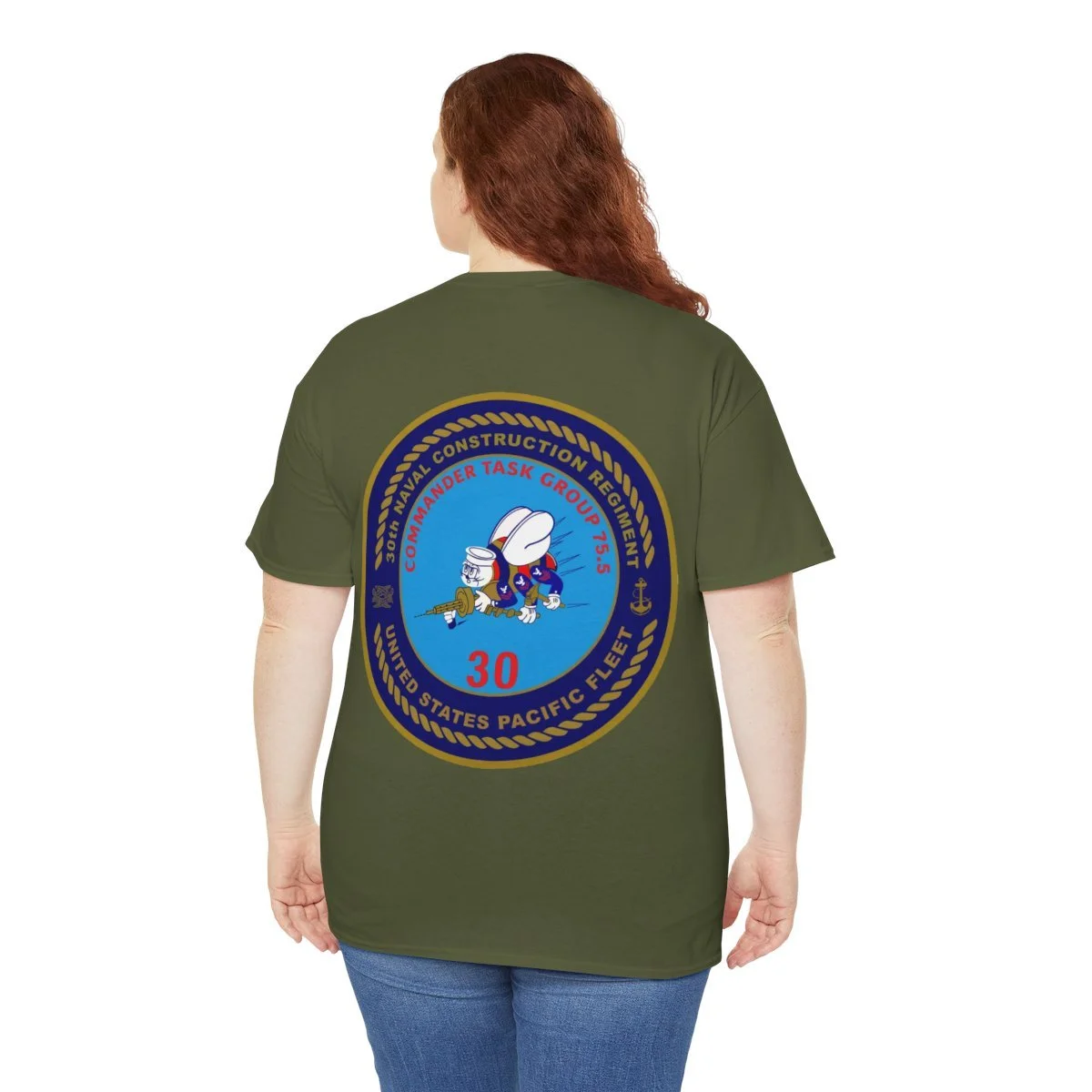 Image 17 of 28
Image 17 of 28

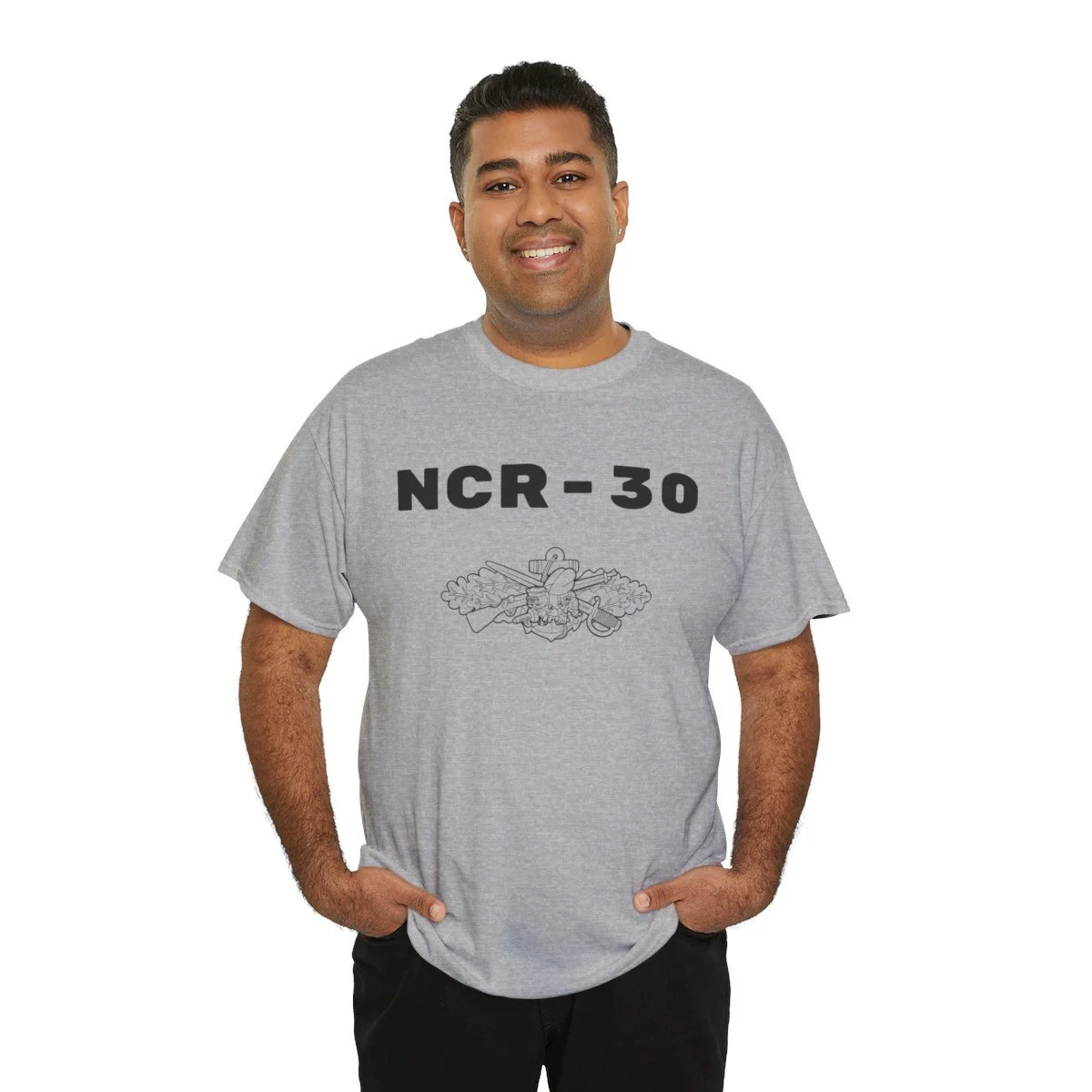 Image 18 of 28
Image 18 of 28

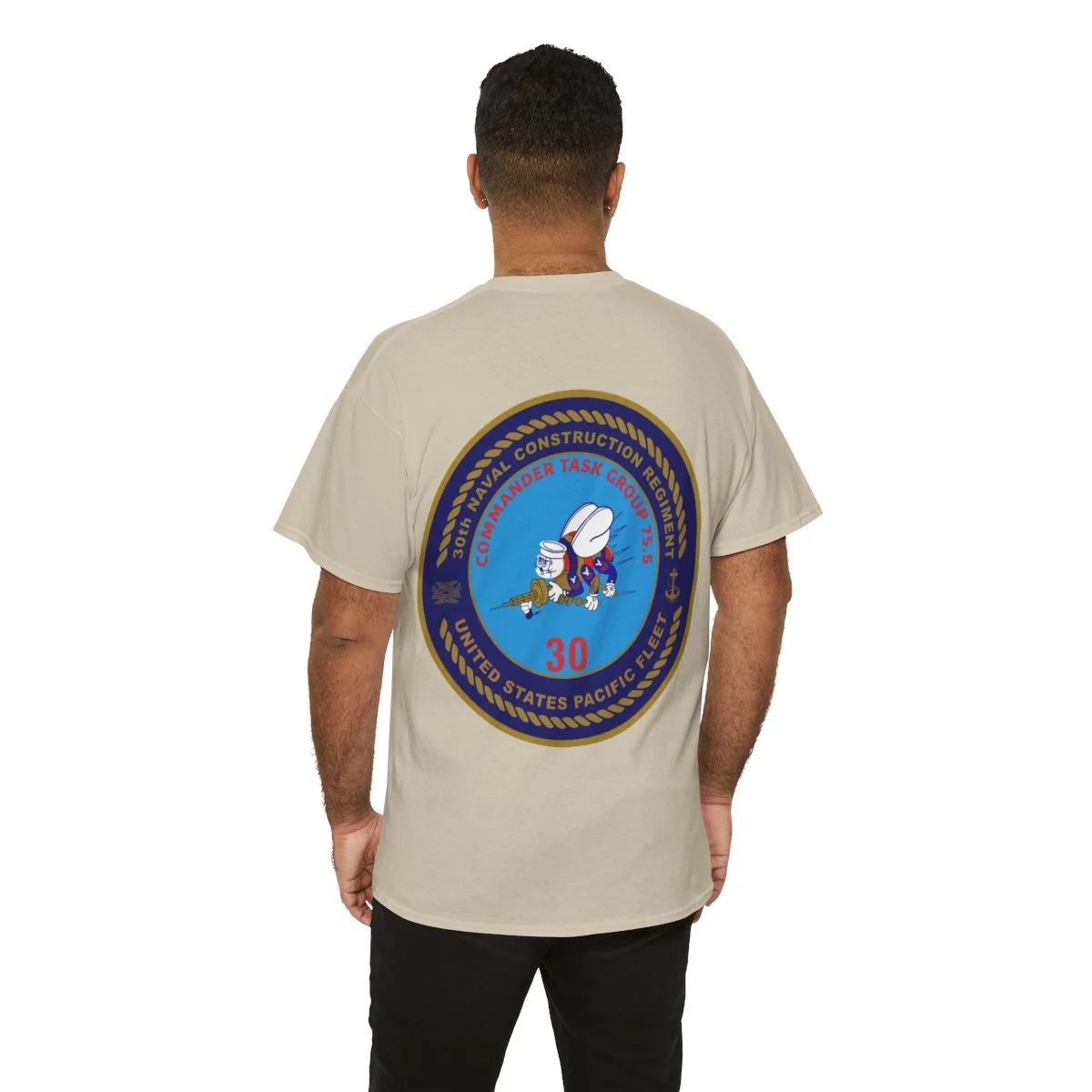 Image 19 of 28
Image 19 of 28

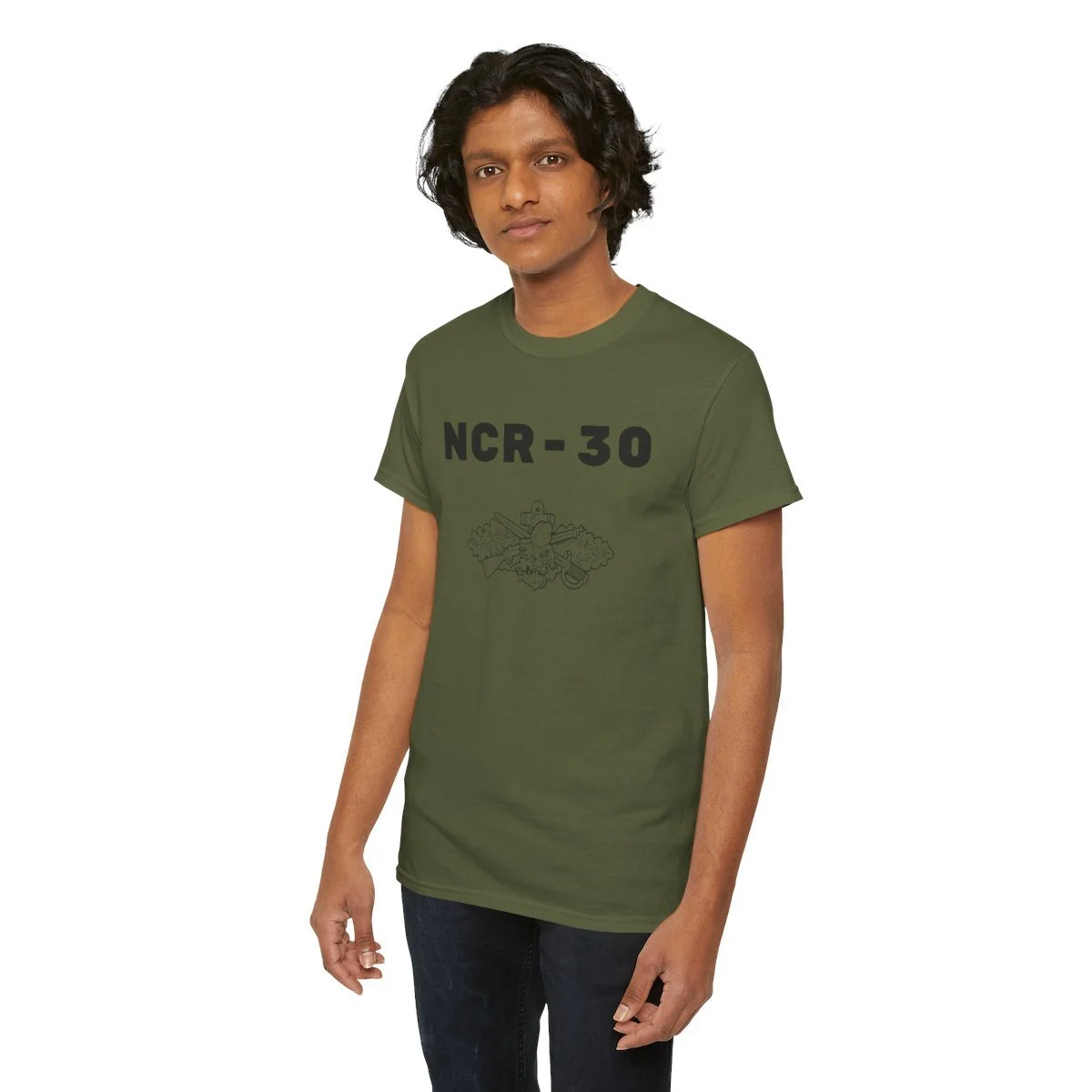 Image 20 of 28
Image 20 of 28

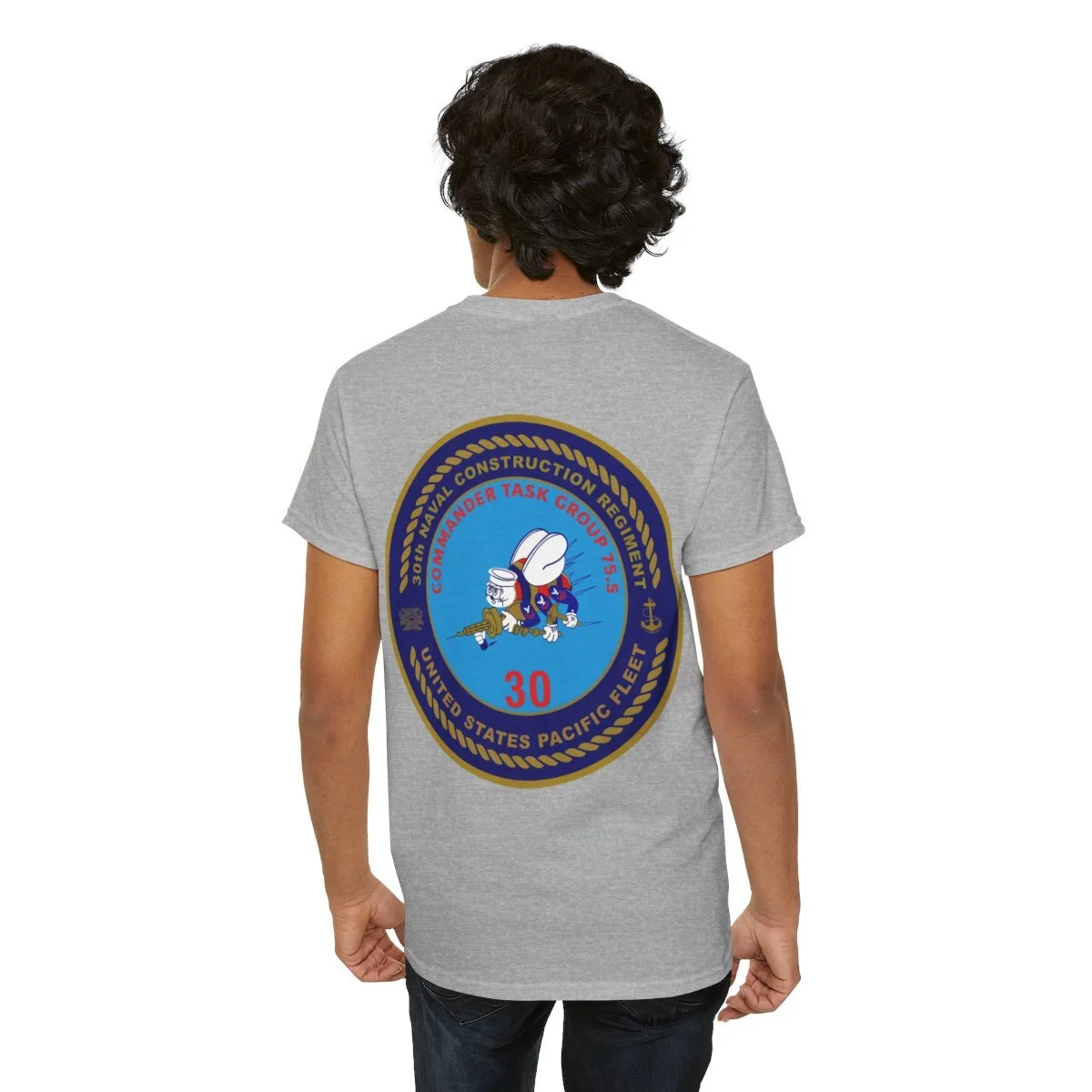 Image 21 of 28
Image 21 of 28

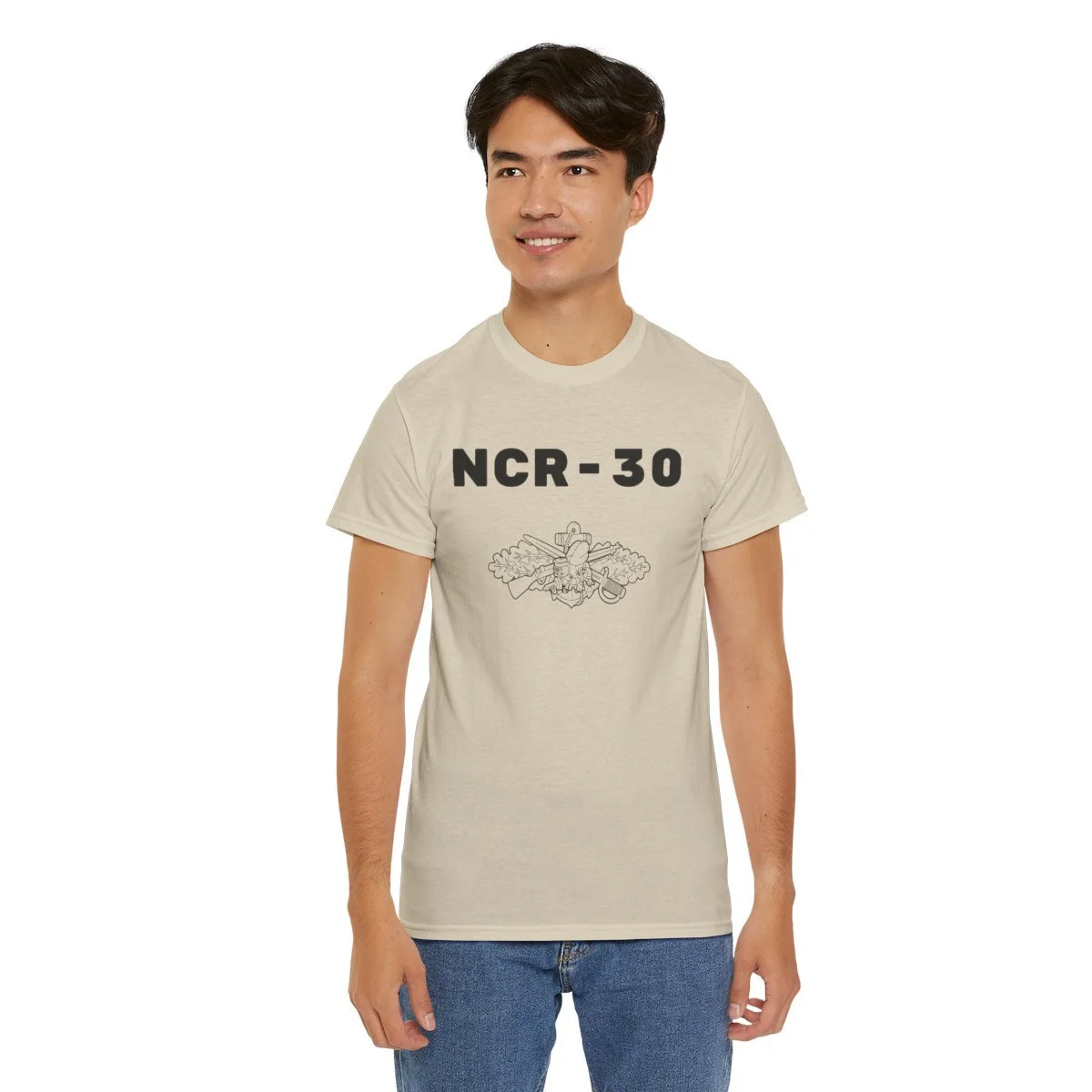 Image 22 of 28
Image 22 of 28

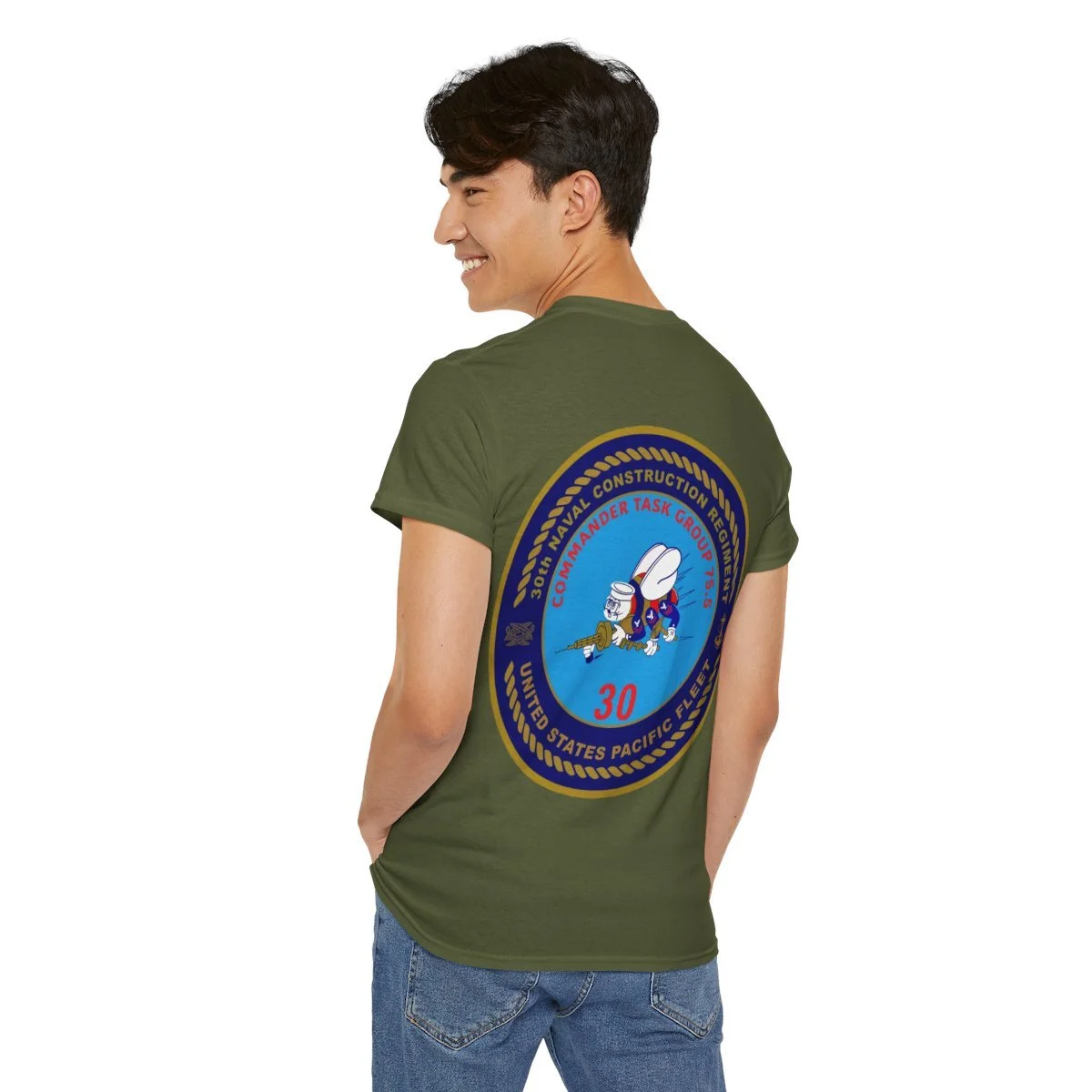 Image 23 of 28
Image 23 of 28

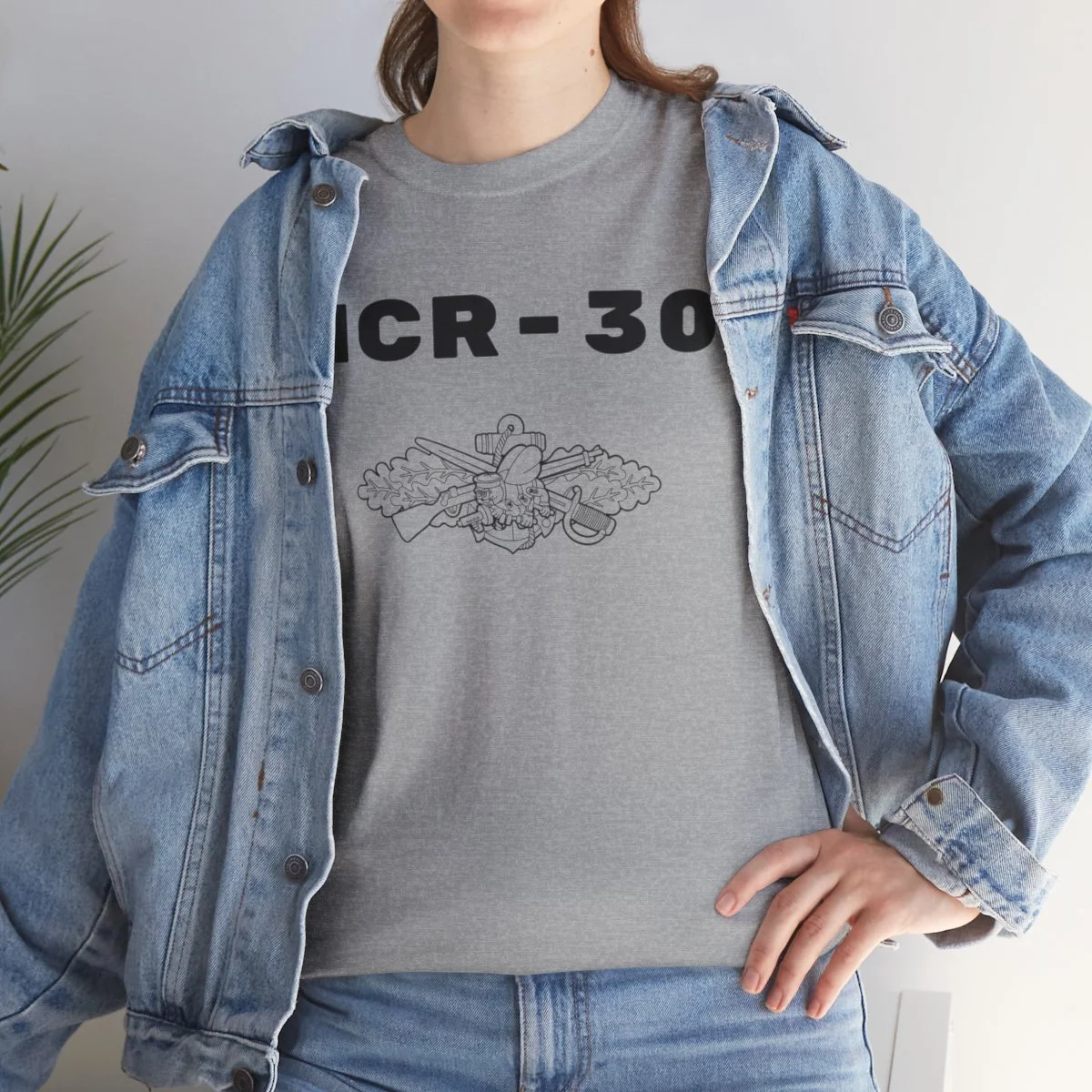 Image 24 of 28
Image 24 of 28

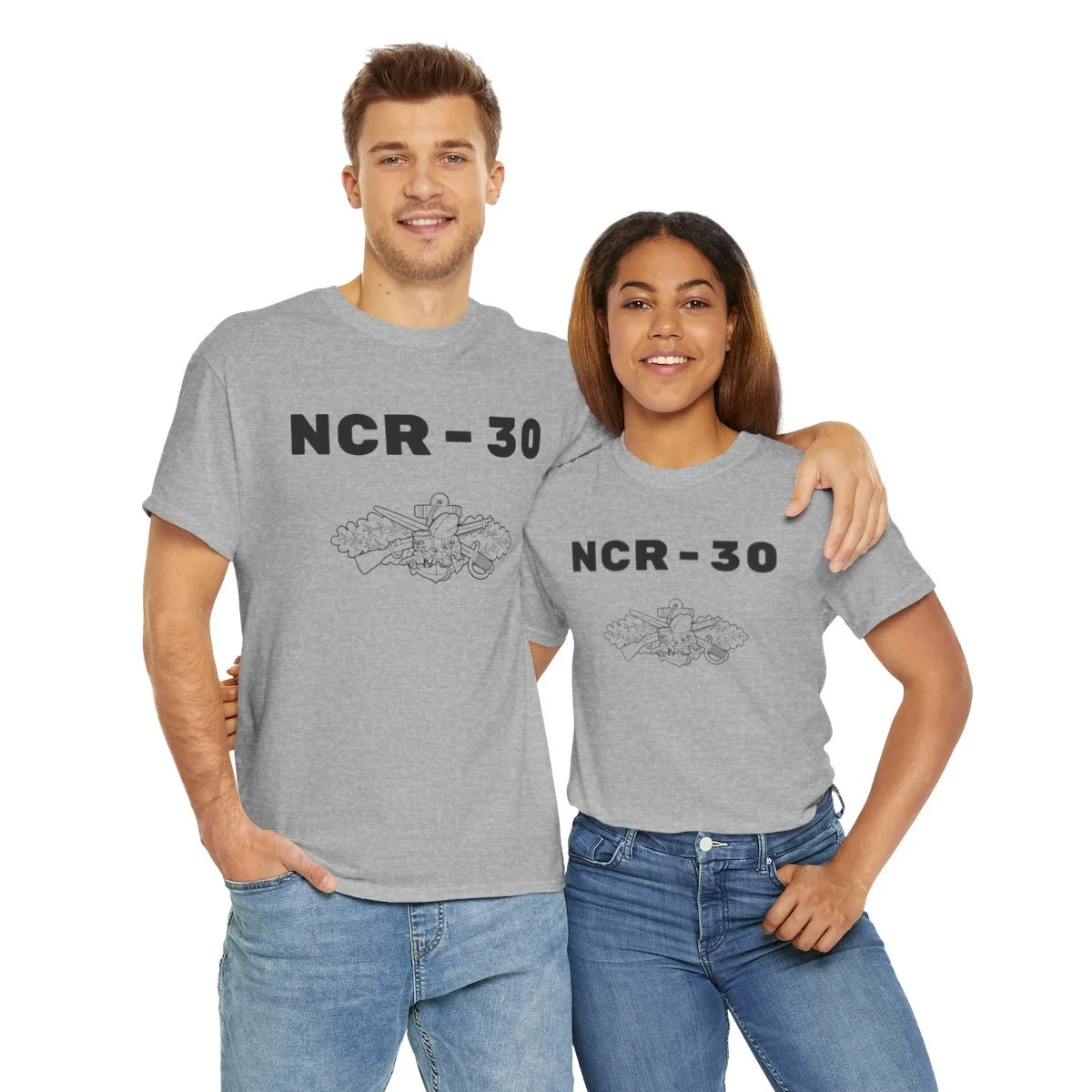 Image 25 of 28
Image 25 of 28

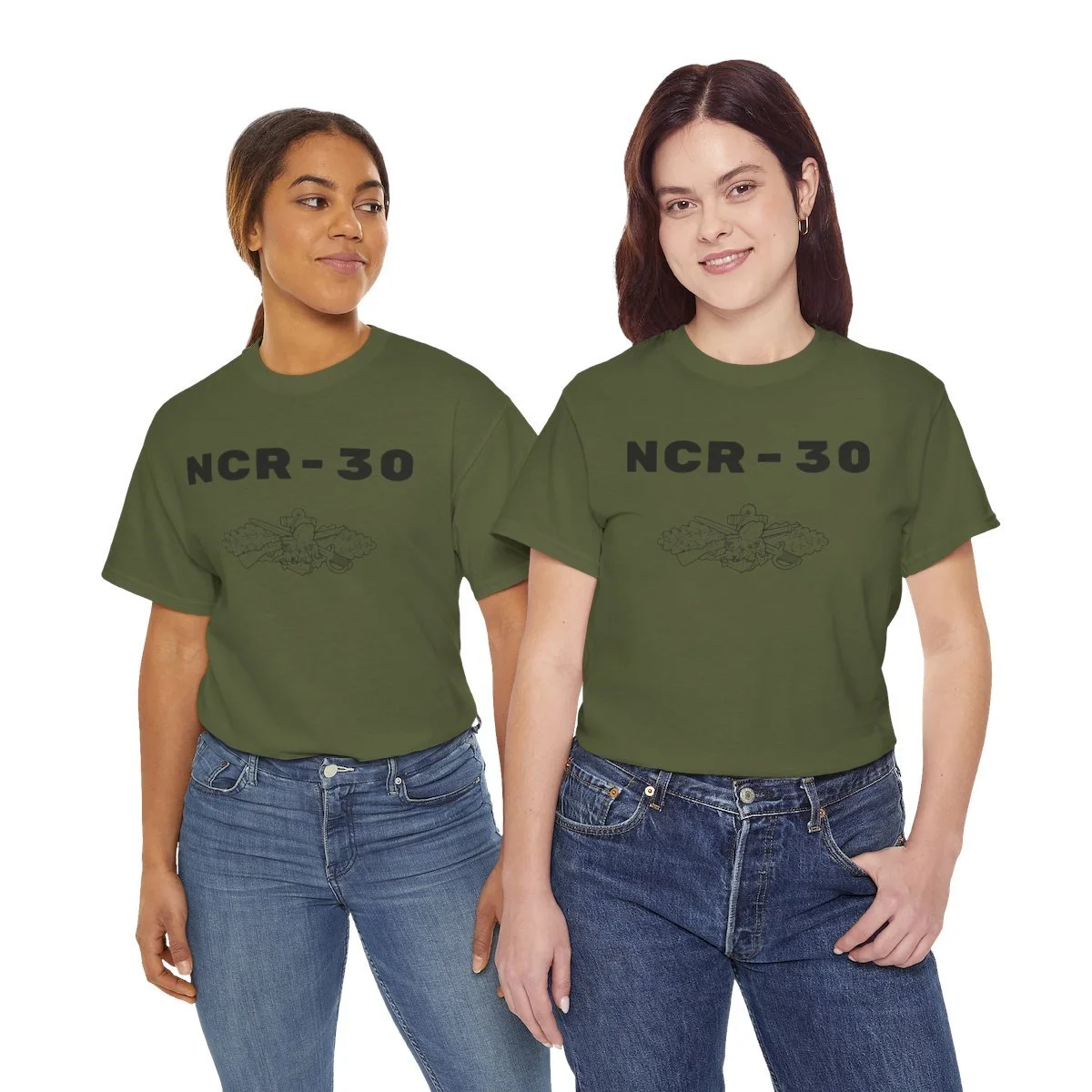 Image 26 of 28
Image 26 of 28

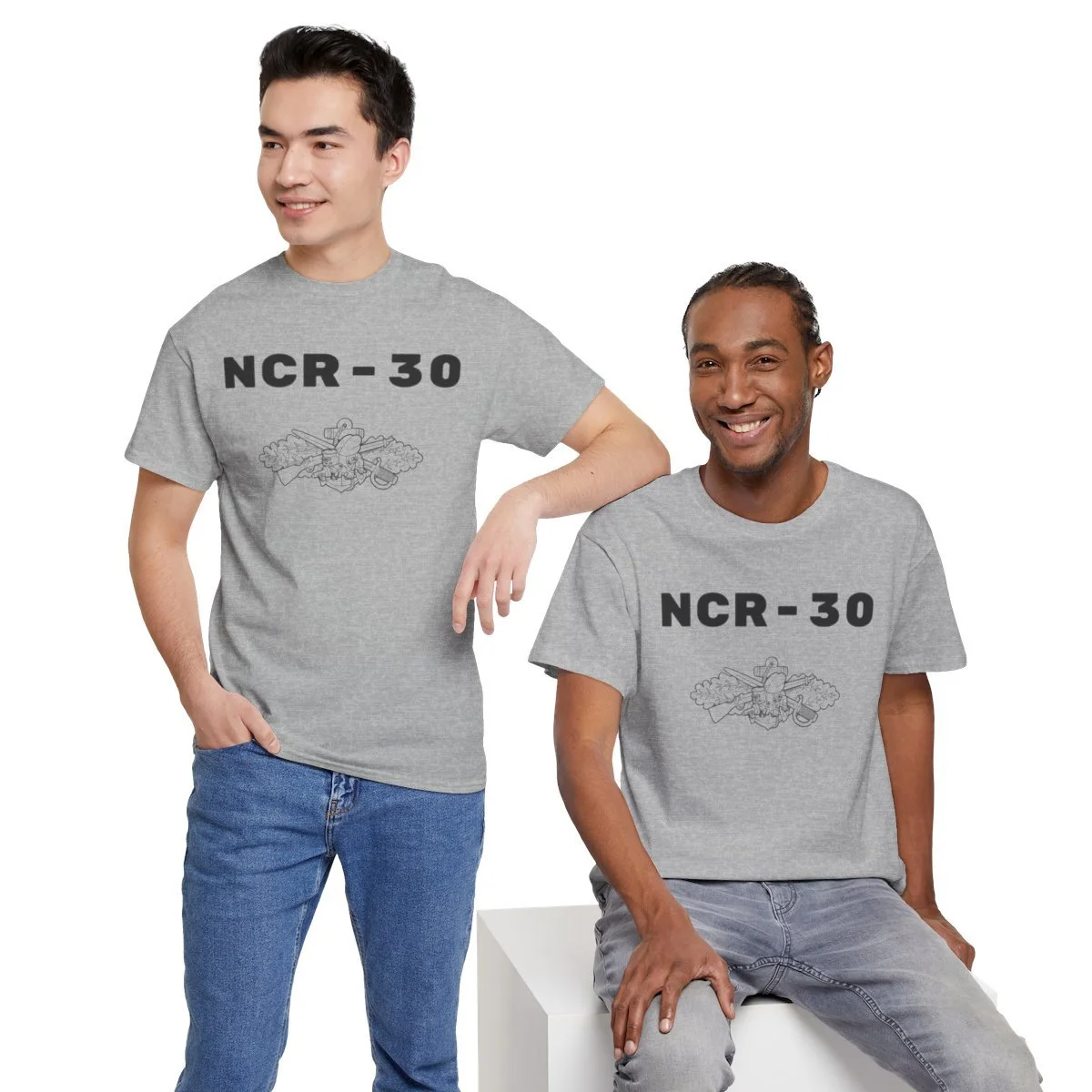 Image 27 of 28
Image 27 of 28

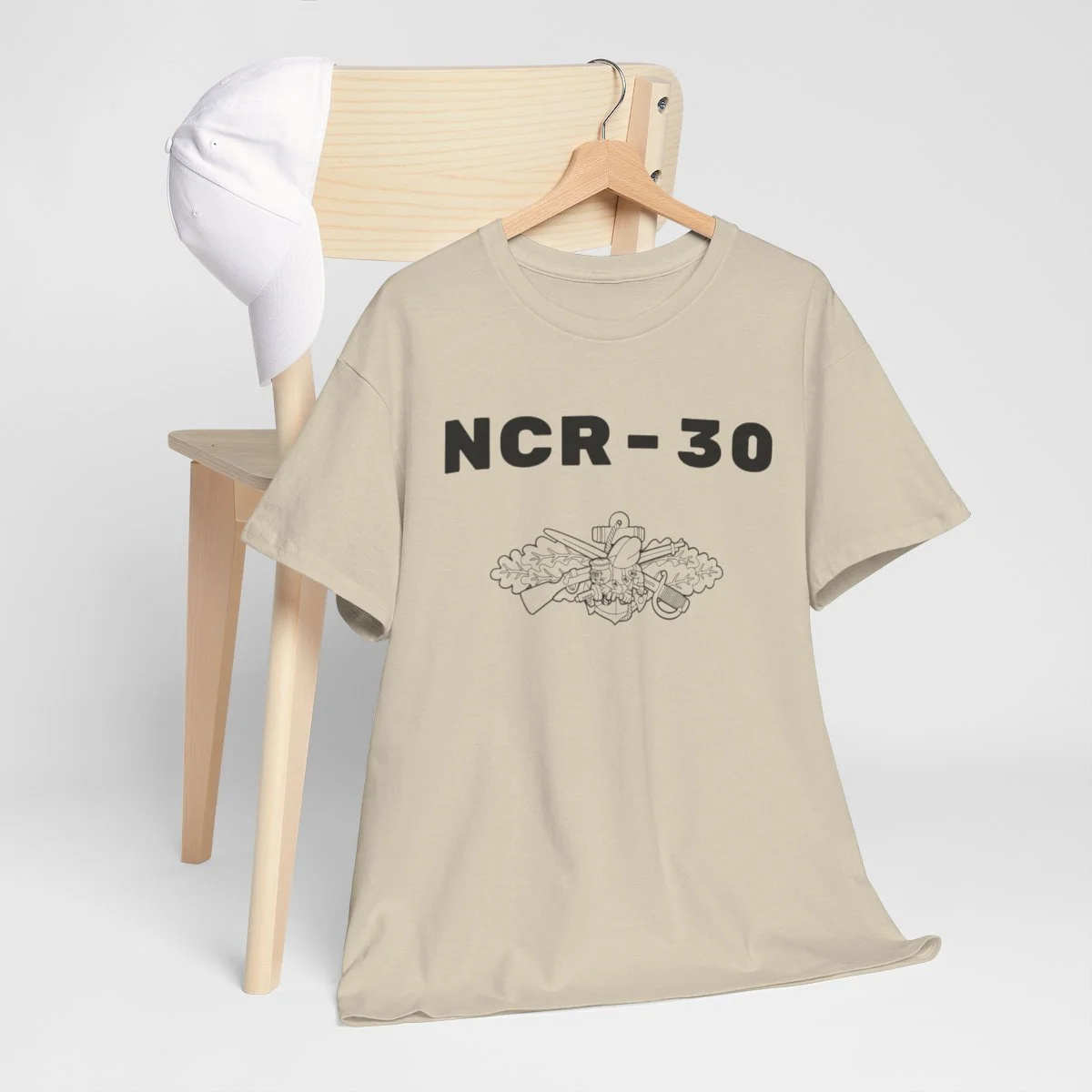 Image 28 of 28
Image 28 of 28





























Thirtieth Naval Construction Regiment (NCR-30) T-Shirt with Seabee Combat Warfare Specialization on Front and Regiment Logo on Back
Show your Seabee pride with our exclusive Thirtieth Naval Construction Regiment (NCR-30) Seabee Combat Warfare Specialist T-Shirt. The front proudly displays NCR-30 and the SCWS Insignia. The backside displays the proud NCR-30 logo. The shirts are unisex and come in sand, sport grey, and military green. Since Seabees come in all sizes, our shirts range from small to 5XL.
NCR-30 History
The 30th Naval Construction Regiment (30NCR) has played a pivotal role in U.S. military construction efforts from WWII through to contemporary operations across the globe. Initially established in 1944 on Saipan, the 30NCR was instrumental in constructing airfields and infrastructure crucial for the Pacific campaign against Japan. After being inactivated post-WWII, it was reactivated in Guam in 1947, later moving to Cubi Point, Luzon, in 1952 to lead the construction of the U.S. Naval Air Station Cubi Point. In 1965, it was reactivated in Vietnam to oversee Seabee battalions and was involved in construction projects across the Western Pacific and the major project at Diego Garcia until its disestablishment in 1984. Reactivated again in 1992 with headquarters in Pearl Harbor, Hawaii, the 30NCR has since been involved in various international missions, including humanitarian efforts in Somalia during Operation Restore Hope, and extensive support for Operations Enduring Freedom and Iraqi Freedom (OIF). The regiment was heavily involved in construction projects in Iraq and Afghanistan, significantly contributing to military and civil infrastructure. In 2013, 30NCR merged with the 31st Seabee Readiness Group to form Naval Construction Group 1, enhancing operational and administrative efficiency. The regiment has continued to demonstrate its versatile capability in disaster response, as seen in the Pacific Partnership 2015 in Vietnam and construction and humanitarian efforts in the Philippines during Exercise Balikatan. In recent years, 30NCR shifted its homeport to Naval Base Guam to better command its deployed units, showcasing its resilience and adaptability following the destruction caused by Super Typhoons Mangkhut and Yutu in the Northern Mariana Islands. The "Can Do" spirit of the Seabees remains robust in the 30NCR, reinforcing its status as the military's engineering force of choice. Seabee Combat Warfare Specialist The Seabee Combat Warfare Specialist insignia is a United States Navy warfare qualification awarded to personnel assigned to units within the Naval Construction Force (Seabees), such as Naval Construction Groups, Regiments, Mobile Construction Battalions, Underwater Construction Teams, Maintenance Units, and Amphibious Construction Battalions. Eligibility extends primarily to enlisted Seabee Occupational Field ratings and Civil Engineer Corps members, but any officer or enlisted member in a qualifying unit who completes the required criteria may earn it. Candidates must demonstrate proficiency across a broad range of naval and military subjects, including naval heritage, command and control, safety, logistics, communications, weapons, military tactics, and chemical, biological, and radiological warfare. This involves preparatory coursework, Performance Qualification Standards (PQS) for both general and unit-specific knowledge, an officer-specific PQS for officers, career performance and physical fitness standards, participation in field training or operations, a written test, a preparatory oral board, and a final comprehensive oral examination. The insignia, issued in silver for enlisted personnel and gold for officers, features an armed Seabee over a crossed sword and rifle atop oak leaves, symbolizing the Seabees. Authorized by the "Seabee Combat Warfare Specialist" instruction in March 1992, the insignia designator (SCW) is added to the rating designator of those qualified. The first recipient was its designer, Commander Ross S. Selvidge, in March 1993.
Show your Seabee pride with our exclusive Thirtieth Naval Construction Regiment (NCR-30) Seabee Combat Warfare Specialist T-Shirt. The front proudly displays NCR-30 and the SCWS Insignia. The backside displays the proud NCR-30 logo. The shirts are unisex and come in sand, sport grey, and military green. Since Seabees come in all sizes, our shirts range from small to 5XL.
NCR-30 History
The 30th Naval Construction Regiment (30NCR) has played a pivotal role in U.S. military construction efforts from WWII through to contemporary operations across the globe. Initially established in 1944 on Saipan, the 30NCR was instrumental in constructing airfields and infrastructure crucial for the Pacific campaign against Japan. After being inactivated post-WWII, it was reactivated in Guam in 1947, later moving to Cubi Point, Luzon, in 1952 to lead the construction of the U.S. Naval Air Station Cubi Point. In 1965, it was reactivated in Vietnam to oversee Seabee battalions and was involved in construction projects across the Western Pacific and the major project at Diego Garcia until its disestablishment in 1984. Reactivated again in 1992 with headquarters in Pearl Harbor, Hawaii, the 30NCR has since been involved in various international missions, including humanitarian efforts in Somalia during Operation Restore Hope, and extensive support for Operations Enduring Freedom and Iraqi Freedom (OIF). The regiment was heavily involved in construction projects in Iraq and Afghanistan, significantly contributing to military and civil infrastructure. In 2013, 30NCR merged with the 31st Seabee Readiness Group to form Naval Construction Group 1, enhancing operational and administrative efficiency. The regiment has continued to demonstrate its versatile capability in disaster response, as seen in the Pacific Partnership 2015 in Vietnam and construction and humanitarian efforts in the Philippines during Exercise Balikatan. In recent years, 30NCR shifted its homeport to Naval Base Guam to better command its deployed units, showcasing its resilience and adaptability following the destruction caused by Super Typhoons Mangkhut and Yutu in the Northern Mariana Islands. The "Can Do" spirit of the Seabees remains robust in the 30NCR, reinforcing its status as the military's engineering force of choice. Seabee Combat Warfare Specialist The Seabee Combat Warfare Specialist insignia is a United States Navy warfare qualification awarded to personnel assigned to units within the Naval Construction Force (Seabees), such as Naval Construction Groups, Regiments, Mobile Construction Battalions, Underwater Construction Teams, Maintenance Units, and Amphibious Construction Battalions. Eligibility extends primarily to enlisted Seabee Occupational Field ratings and Civil Engineer Corps members, but any officer or enlisted member in a qualifying unit who completes the required criteria may earn it. Candidates must demonstrate proficiency across a broad range of naval and military subjects, including naval heritage, command and control, safety, logistics, communications, weapons, military tactics, and chemical, biological, and radiological warfare. This involves preparatory coursework, Performance Qualification Standards (PQS) for both general and unit-specific knowledge, an officer-specific PQS for officers, career performance and physical fitness standards, participation in field training or operations, a written test, a preparatory oral board, and a final comprehensive oral examination. The insignia, issued in silver for enlisted personnel and gold for officers, features an armed Seabee over a crossed sword and rifle atop oak leaves, symbolizing the Seabees. Authorized by the "Seabee Combat Warfare Specialist" instruction in March 1992, the insignia designator (SCW) is added to the rating designator of those qualified. The first recipient was its designer, Commander Ross S. Selvidge, in March 1993.
